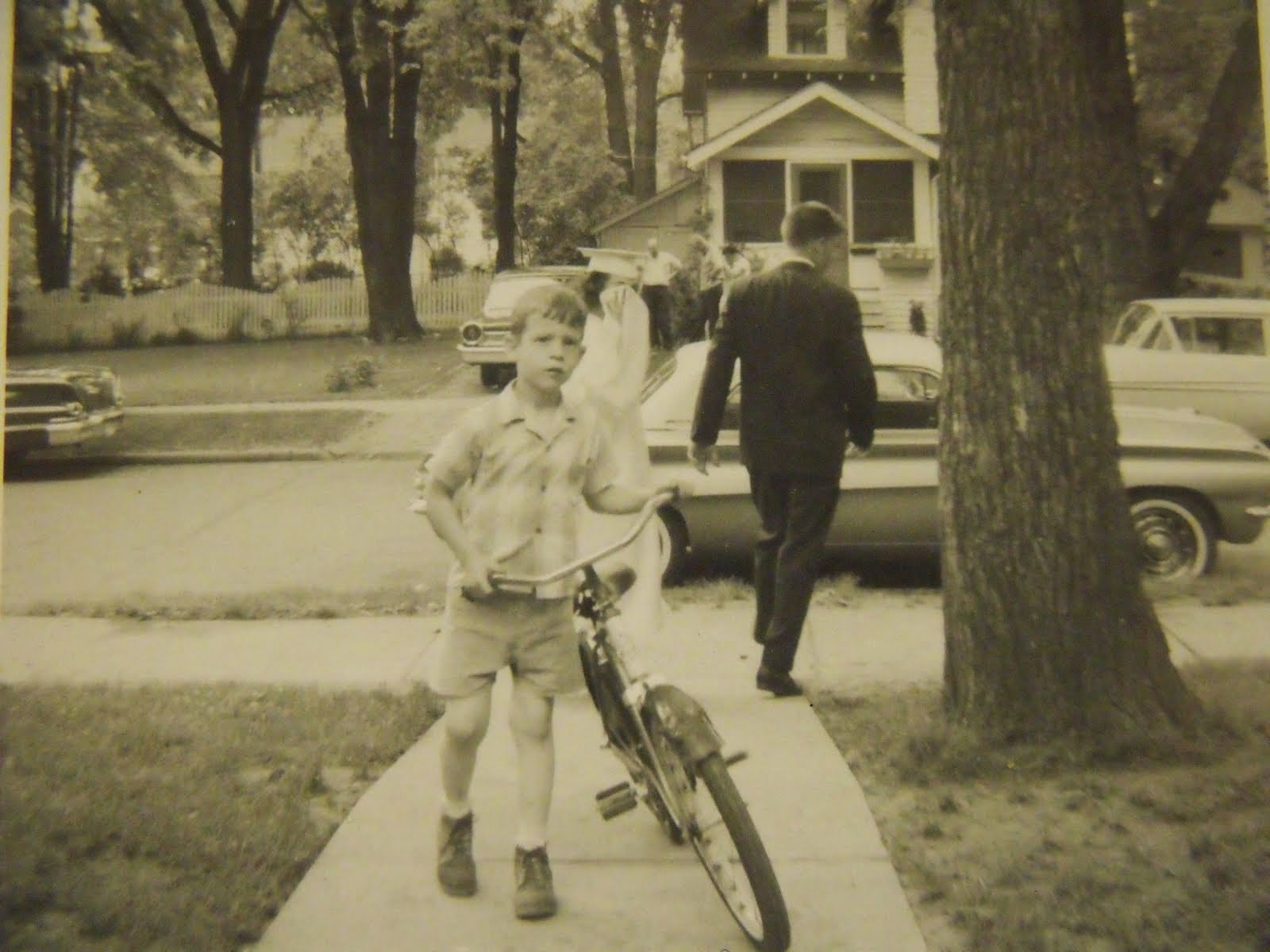Left Click on Image to Enlarge, Back(<)Button to Return
Above: Here is the bracket and crank back on the bike. I am pleased with the way these came out. I also removed the shift cable guide/pulley and cleaned it up. I used the Mother`s Mag and Aluminum Polish to dissolve the caked on sludge on the sprocket teeth. As usual I also used Mother`s on all the bearing cups. (bracket and head-set)
Above: Judging by the lack of wear on these pedals I think it is safe to assume this is a very low mileage bike. The pedal`s metal parts were cleaned-up with brass brushes and Turtle-Wax Chrome Cleaner/Polish/Rust Remover. The rubber blocks were cleaned -up with a bio-degradable de greaser and a scrub-brush.
Above: The front wheel all cleaned up and ready for the new Kenda Gum-Walls to arrive. Both front and rear hubs have oil ports. I am a huge fan of oil ports. I like the idea of the average "not-mechanically inclined" Joe being able to lube anything without having to take it apart first. I guess that`s why I like the self adjusting levers as well.
Above: The "Self-Adjusting" levers cleaned-up real nice. If you take one of these apart for the first time, leave the other one together for a reference. I`m glad I did. There is a little drop-in piece that I assume turns the little cog.(or holds the cog in place after it has advanced ) It fell out before I even got a look at where it was. So I carefully took the other one apart to see how it drops in. I should have gotten a pic of that. My mistake. At any rate, they do work. I remember that from the Raleigh Sprite. When you squeeze the lever something (maybe the little clip) turns the little cog which takes the excess slack out of the cable. I think it only does this when the lever is pulled-in farther than it would normally if the cable were tight. Very cool (:
Above: I think this is the original Sturmey Archer shifter. It looks pretty nifty after all surface rust has been removed. It had not been polished yet when this pic was taken. I ordered a replacement cable. But this one is in such fine shape I decided not to replace it. I did clean up the adjuster-end of the cable. I think I have a pic of that I can squeeze in here. (see below) The shift cable on a Sturmey Archer 3 speed is not under a great deal of tension. It is for this reason that I feel confident not replacing the existing cable that looks to be in "near perfect" condition. I did however lubricate the cable housing with a three or four drops of clean electric motor lube. I also put the same light oil on the linkage chain at the business end of the cable. And wiped off the excess with a clean rag.
Above: The surface rust on the bars and stem came off easily using a SOFT brass wheel brush (on 4&1/2inch angle grinder)and a brass detail brush and lots of Turtle-Wax Chrome/Cleaner/Polish & Rust Remover. The Turtle-Wax is almost gone, I`ll be trying the Mother`s Chrome Cleaner Polish Next. I have been told the bracket with the Heron on it was originally a mount for a specific type headlamp. Maybe one of our friends "across the pond" can confirm this. Whatever it is for, it looks really cool.

Above: This is pretty much where I am at with the Raleigh right now. Since this photo was taken I have cleaned-up the chain. I also have been experimenting with the touch-up paint. Trying to come up with the best color match. I have ordered the tires Kenda 26 x 1-3/8 Gum-Walls with the old style tread. Also (at the owners request) some "Mr Tuffy" tire-liner. I wonder if there is going to be ample room for the inner-tubes now. I could see a little "accordion effect" on the tubes when I removed the tires. It may have been caused by not inflating the tires properly. After mounting a new tire I inflate the tire to about 20 or 30 psi psi. I check the bead, then deflate the tire, and then pump it back up up to about 75%max inflation. Then I re-check the bead if the bead (seal) if it looks good (even) I then pump it up to desired inflation. Sometimes if I suspect, or am not confident the seal is good, I`ll leave the psi at 75% for a day or two.
Above: One of the new additions to the garage/shop this winter is this commercial light-stand. An old friend recently purchased my mortar mixer. He was just a little too low on his bid. So I requested he include this light-stand. It has been a real God-send. As requested by one of my readers I will be doing a post soon about some of the must have tools around the shop. Till next time, HAPPY NEW YEAR!
As always, RIDE SAFE and remember to always RESCUE, RESTORE & RECYCLE
Cheers,Hugh


































